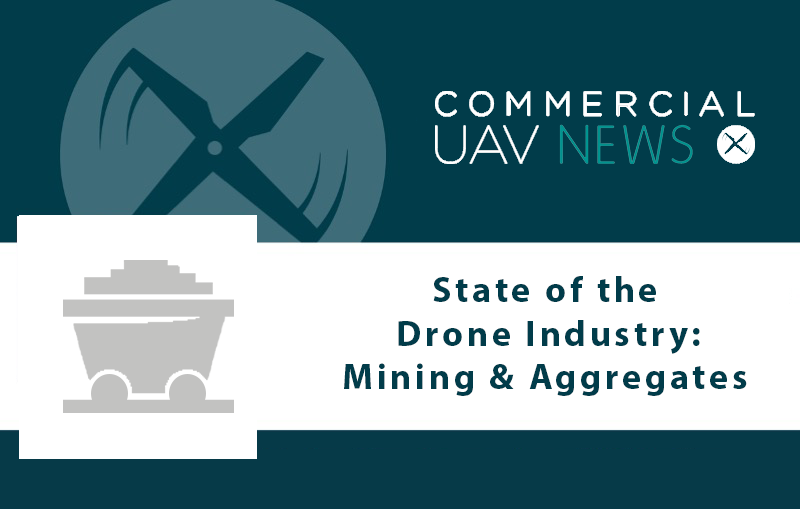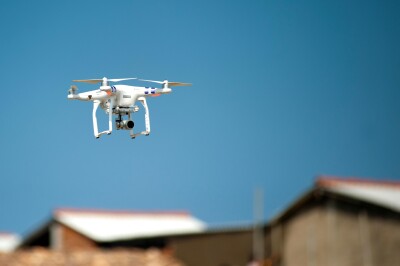More and more, the mining industry is embracing drone technology. According to Lauren Elmore, CEO of Firmatek, 2017 marked “the height of the early adopter phase” for the sector, and the integration of drones in mining operations has progressed steadily since then.
“About five years ago, a lot of mining companies were starting to adopt drones, but there were still issues with the technology,” she explained. “But people were beginning to see and understand how drones, and more importantly, the information that they provide, could change the way they operate their businesses.”
Thomas Haun, Chief Operating Officer of Turner Mining Group, agreed. “The improvement in the past five years has been awesome,” he said. “The fact that drones are being used at all is a nice step for our industry. We’ve come a long way.”
Increased acceptance of drones by the business world—and by the general public —has driven much of this progress. Improvements in mapping and data collection capabilities have also pushed things ahead.
“Mapping is by far the most used and demanded service in the mining industry, and drones for mapping have come a long way in the last five years or so. There are some very good and cost-effective platforms,” Elmore asserted. “Drone technology is affordable and accurate and reliable for data collection, and the software tools available allow companies to use the information effectively.”
With data collection, Haun said that great progress has been made around sensor miniaturization, data processing capabilities, and data analysis. “The technology continues to progress, and the value that can be extracted from the information provided continues to grow alongside the technology,” he stated.
For Haun and Elmore, adapting drones to critical mining tasks and getting buy-in from industry leaders are needed to fully exploit the potential of the technology.
“Mining is one of the oldest industries in the world, and there are tried-and-true practices ingrained into everyday operations,” Haun asserted. “Making a technology change in an industry like this requires significant ‘business process reengineering.’”
There are many examples of how mining businesses have been “reengineered” to employ drones. Elmore explained how her firm adapted UAV technology to streamline operations for one customer.
“One client we have has used the data and reporting we provide to change the way he operates at a corporate level,” she explained. “The data and analysis give him the ability to know what is going on at his sites across the country, and he uses this information to manage people and sites from his corporate office. It has changed the way he is able to lead and approach meetings by arming him with insights and information to ask the right questions of the people on the ground.”
Drone-collected data and reporting can greatly improve productivity, reporting, and safety for mining operations. But, Haun cautioned, the technology must be closely tied to the realities of day-to-day, onsite mining work.
“When I talk about business process reengineering, there is absolutely an element of making these solutions stick in the field,” Haun said. “Any technology in the mining industry cannot just be something that’s done ‘in the office.’ It must be something that’s done in the dirt, because in the dirt is where the value is created.”
With this in mind, Haun said that technology providers can face challenges when working with mining professionals. “Frankly, they're unfamiliar with the set of requirements that come with effective mining operations,” he stated. “When the industry can break through to the point where a mine or quarry starts using the technology themselves, instead of only relying on a third-party expert to interpret the data, then we will really be crossing the threshold to mass market adoption, and that hasn’t happened yet.”
Despite these challenges, both Haun and Elmore foresee drone use continuing to grow in the sector.
“The mining industry has embraced the use of drones. However, I think there is still work to do to take it to the next level,” Elmore said. “The next step for many of these operations is to take the information and apply it in their businesses. Many still use this as an inventory check, which is valuable, but how can you take the information you are getting, and apply it to your operations? Can you use the information to change the way you do business? This is what we are working on with our clients.”
Haun agreed that challenges lie ahead. “Everyone realizes that drones are needed,” he said. “Now, it is a question of how to implement them in your operations. What model will work best for your operation? Is it services? Is it pure software? Is it some kind of hybrid?”















Comments